There are many ways to grow vegetables at home, from hydroponics to herb pots. Growing your own mushrooms can be a relatively low-cost and straightforward option to follow for folks who want to get a bit more adventurous and expand their horizons beyond the stereotypical fruits and vegetables.
One of the most popular methods used by urban farmers at home involves combining used coffee grounds and a little bit of substrate (the material that the mushroom grows on) with spawn to create a delicious batch of freshly grown gourmet mushrooms.
This is also an environmentally friendly approach to repurpose something that would otherwise be thrown away, as 6 million tonnes of discarded coffee grounds are transported to landfills each year.
Whether you’re a seasoned grower or the concept of cultivating mushrooms at home seems mysterious and complicated, we’ve laid down the steps for you below to learn everything about growing mushrooms in coffee grounds.
Tried buckets, logs, or coffee grounds? Our mushroom growing kits offer a simpler, faster-growing alternative with predictable results – explore the full range now.
Why Use Coffee Grounds to Grow Mushrooms?
As touched on above, millions of tonnes of coffee grounds are sent to landfills every year; this is because when you make a cup of coffee, only a small amount of the coffee biomass ends up in the cup.
We know the world loves coffee; over 2.25 billion cups of it are consumed worldwide each day. And, with an estimated 11 grams of fresh ground coffee in each cup, 9 million tonnes of ground coffee are brewed annually around the world, resulting in an estimated 18 million tonnes of wet, discarded coffee grounds. But what happens to all those discarded grounds once the coffee is poured?
Typically, leftover coffee grounds are thrown away and transferred to landfills, where they generate methane, a greenhouse gas 25 times more powerful than carbon dioxide and one of the principal causes of global warming.
This massive amount of discarded coffee, on the other hand, is still full of nutrients that mushrooms love to eat.
The Benefits of Growing Mushrooms on Coffee Grounds
Growing mushrooms on coffee grounds is a fun and alternative substrate choice for hobbyist growers who are looking to try something a little different. There are quite a few benefits of growing on coffee grounds:
Recycling waste product
Mushrooms are born to recycle, which is one of their many advantages. When a tree falls in a forest, the mushroom’s mycelium will break down the wood’s complex molecules and recycle them back into the food chain, where bacteria, insects, and other fungi can use them to return to the soil.
They are essential players in the nutrient cycle, and their capacity to do so makes them ideal for recycling various organic waste streams. Oyster mushrooms, in particular, are exceptionally adaptable, having been found to grow on hundreds of different types of agricultural waste.
No need for substrate pasteurisation or sterilisation
Typically, the substrate must be pasteurised or sterilised while cultivating mushrooms.
Pasteurisation with hot water or steam is the most popular method to remove the impurities from the substrate, which is either messy on a small scale or expensive and energy-consuming on a larger scale.
Instead, growing on coffee waste means the grounds have already been pasteurised by the brewing process, allowing you to skip this energy-intensive and expensive phase entirely. Though it’s important to look after the grounds correctly to avoid this step.
Easy to work with
Because you won’t have to sterilise your growing substrate, it’ll be a lot easier to get started, and you won’t need a lot of big, expensive equipment.
Once you’ve figured out your growth plan, you can just go to your local cafe, gather some grounds, mix in the spawn, bag it up, and watch it grow. It will be pretty much the same as planting tomato or basil seeds.
Easy to source
Most cafés will gladly give you their waste grounds if you just tell them a pick-up time and bring your own bucket. This makes it an excellent free supply of substrate, especially if you live in a big city with a lot of discarded coffee.
Top Tips For Successfully Growing Mushrooms On Coffee Grounds
Always use freshly brewed coffee
Growing mushrooms is all about giving the mycelium the best chance to win a race against other incredibly competitive moulds. This mycelium spreads throughout the substrate (food source) and must thoroughly colonise it before mushrooms form.
Before adding the mushroom spawn, traditional mushroom growers disinfect or pasteurise the substance they’re growing on. Growing on coffee grounds has the advantage of pasteurising the grounds for us. However, the coffee does not last long in this state.
The biggest mistake you can make is to use coffee that is too old and has other organisms such as mould growing on it. You can’t always see it with the naked eye, but if the coffee has been sitting for more than 24 hours, it’s more likely to grow mould rather than mushrooms.
Store the coffee grounds in a sanitary environment
Cleaning must be incorporated into your daily routine when growing mushrooms. Contaminants are always lurking around, waiting for an opportunity to take hold, and if you don’t put in the effort to keep them away, your harvest will suffer.
It’s just as important to use a sanitised bucket – wiped down with isopropyl alcohol – and ensure it is closed with an airtight lid when transporting or storing your coffee grounds. Though, following our note above, you shouldn’t be storing your coffee grounds very often.
It just makes sense to grow mushrooms in coffee grounds. You make wonderful nutritious oyster mushrooms out of a bountiful waste resource that is still rich with nutrients.
You can return the now composted grounds to enrich your soil at the end of the growth cycle to complete its life cycle too.
How To Grow Mushrooms Using Coffee Grounds
Read on below to learn how to grow mushrooms from coffee grounds. You’ll find several recommendations specific to using coffee grounds as your substrate to help give you the highest chance of success.
What you will need
- Oyster mushroom spawn (we have a wide variety of oyster mushroom spawn available, including pink oysters, yellow-gold oysters, blue-grey oysters, and white elm oysters.)
- Freshly used coffee grounds (within 24 hours of brewing, the more recent the better)
- Straw (cut into 10cm pieces)
- Isopropyl alcohol (70%)
- Clear plastic bags or food storage bags
- Twist ties or elastic bands
- Large cooking pot
- Kitchen scale
- Thermometer
- Strainer
- Salad Spinner
- Gloves
- Spray bottle
- Utility knife
Supplementing coffee grounds with straw
Although coffee grounds will form the bulk of the substrate, mixing in pasteurised straw or similar woody substrate mixes will prevent the coffee ground mix from becoming too dense and allow for optimal air exchange. Though this is not necessary if growing in smaller quantities (1kg coffee grounds or less).
The proportions of your mixture should be around 70% coffee grounds, 20% straw, and 10% mushroom spawn. By weighing each item on your kitchen scale, you can get accurate measurements.
Step 1. Cleaning your work area
The isopropyl alcohol should be used to clean all of your materials and equipment. It’s critical to sanitise everything throughout this process to avoid the spread of unwanted bacteria. If you do not have isopropyl alcohol, boiling water may be used.
Step 2. Ensure the straw mix is pasteurised
You’ll want to pasteurise your straw before mixing your spores, coffee, and straw together. This can be accomplished by submerging your straw in boiling water until cooled to room temperature. Using your thermometer, you can determine the exact temperature of the water.
Once pasteurised, drain the excess water that is weighing down your straw by dumping it into a strainer and then into a salad spinner.
Step 3. Collecting coffee grounds
It is important to use freshly brewed coffee grounds – within 24 hours of brewing – this is to ensure no mould has accumulated in the coffee. If you are concerned about contamination, you can re-boil the grounds ahead of use.
Go to a busy café and politely ask if you can have some spent grounds. You’ll need enough to fill the bag or container two-thirds full, and the grounds must be fresh on the day you’re using them. Most cafes will gladly do so; if you have any difficulty, simply ask at another one.
Step 4. Inoculating coffee grounds with mushroom spawn
The general rule of thumb is that your spawn needs to be 10% of your substrate, this is the mixture of coffee grounds and straw; for example, using a 60g oyster spawn bag, you will need 600g dry substrate of mixed materials.
Once you’ve figured out your measurements, take your freshly used coffee grounds and combine them with your straw in a container. Using sanitised utensils or your hands if you’re wearing gloves, break up any clumps in the coffee. Add your oyster mushroom spores and break them up if they’re in clumps.
Step 5. Incubating in growing bags or Monotub fruiting chamber
Fill a clear plastic bag halfway with the mixture. Depending on how much material you’re dealing with, you might need more than one bag. Remember to clean this bag down with isopropyl alcohol. Using a twist tie or an elastic band, secure them tightly, ensuring there’s no air stuck in the bag.
You need to ensure your bag is getting some oxygen because you are growing an aerobic organism. Turn the bag upside down and puncture two to three small holes in the bottom (the area you didn’t seal) with your craft knife (aim for holes sized slightly larger than a pen size, less than 3cm usually). Cut two little ones in the front of the bag and two small ones in the back, try to cut your holes in an X shape.
Place your grow bags inside another plastic bag to prevent the substrate from drying out, then place it into a room that is, ideally, between 20-24°C for two to three weeks. An airing cupboard or directly next to a radiator is not appropriate. You should check on it for mycelium growth once a week after 2 weeks of growth.
Mycelium is the vegetative part of fungi that develops before the final result is fully bloomed, similar to a root or a stem that develops in a plant. This is what grows from the spawn in your bag, and you’ll notice growth when a fluffy white substance begins to fill the bulk of your bag.
Growing mycelium is a good sign that you’re on your way to making baby mushrooms.
What is a Monotub fruiting chamber?
You can also use a Monotub instead of a bag. A Monotub is a fruiting chamber that can house an oyster mushroom.
A mushroom fruiting chamber is an enclosed environment that replicates natural mushroom growing conditions. When CO2, humidity, and temperature are closely managed, they are quite successful. Plastic containers, reused micro greenhouses, or a bigger adapted space can all be used to make them.
A Monotub is a plastic tub that has been fitted with holes so that it can be used as an environment for mushroom fruiting. Thermal air currents enable fresh air exchange while keeping moisture inside the tub. The Mycelium produces heat while digesting the substrate, so a thermal air current forms inside the Monotub.
Growing bag vs fruiting chamber
If you want to produce high-quality mushrooms consistently, create a mushroom fruiting chamber to provide the optimal circumstances for them to flourish. You’ll need to construct an environment that has the correct humidity and CO2 levels, as well as the right temperature and lighting for mushrooms.
If you’re only looking to grow oyster mushrooms on a smaller scale, a growing bag will be perfectly fine for you.
Step 5. Prepare the mushrooms for fruiting
You should start to see small mushroom “pinheads” growing (at the 2 to 3-week mark).
Place your bag on a windowsill or in a lighter place with indirect sunlight. You can now start spraying the bags with a little coating of water every day. This should be done twice a day, once in the morning and once in the evening.
Be careful not to waterlog the straw itself, this can prevent mushroom growth and encourage mould. The objective is to raise the humidity of the air around that bag rather than directly watering it as you would do to a plant.
Step 6. Harvest
It’s time to harvest when the tops of the caps start to flatten out. Cook the mushrooms after twisting the cluster off or cutting with a knife and enjoying the satisfaction of eating mushrooms created from coffee waste.
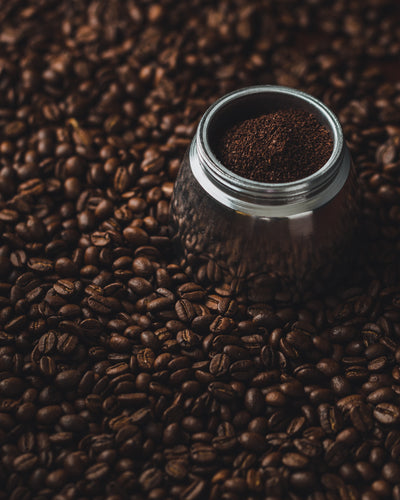
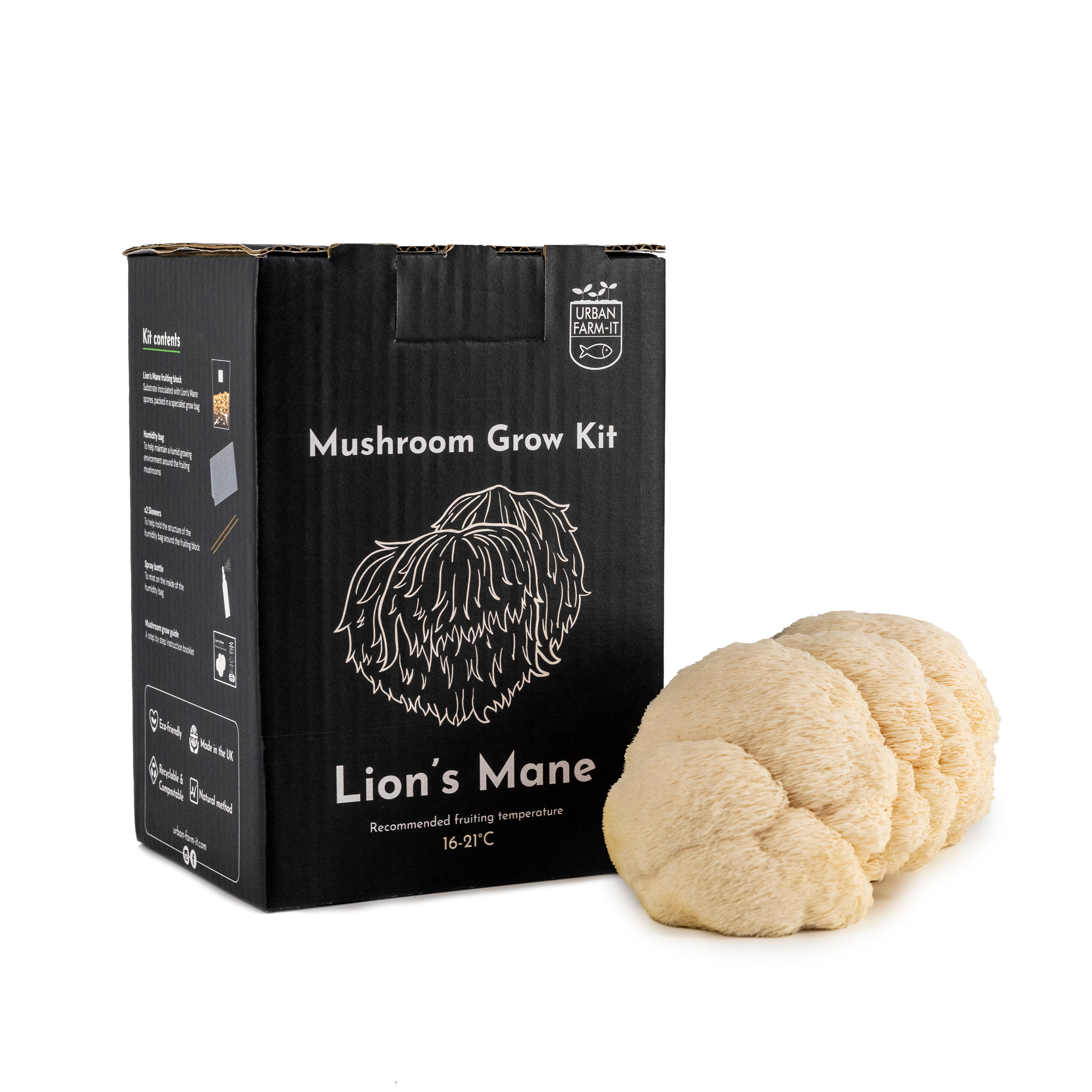
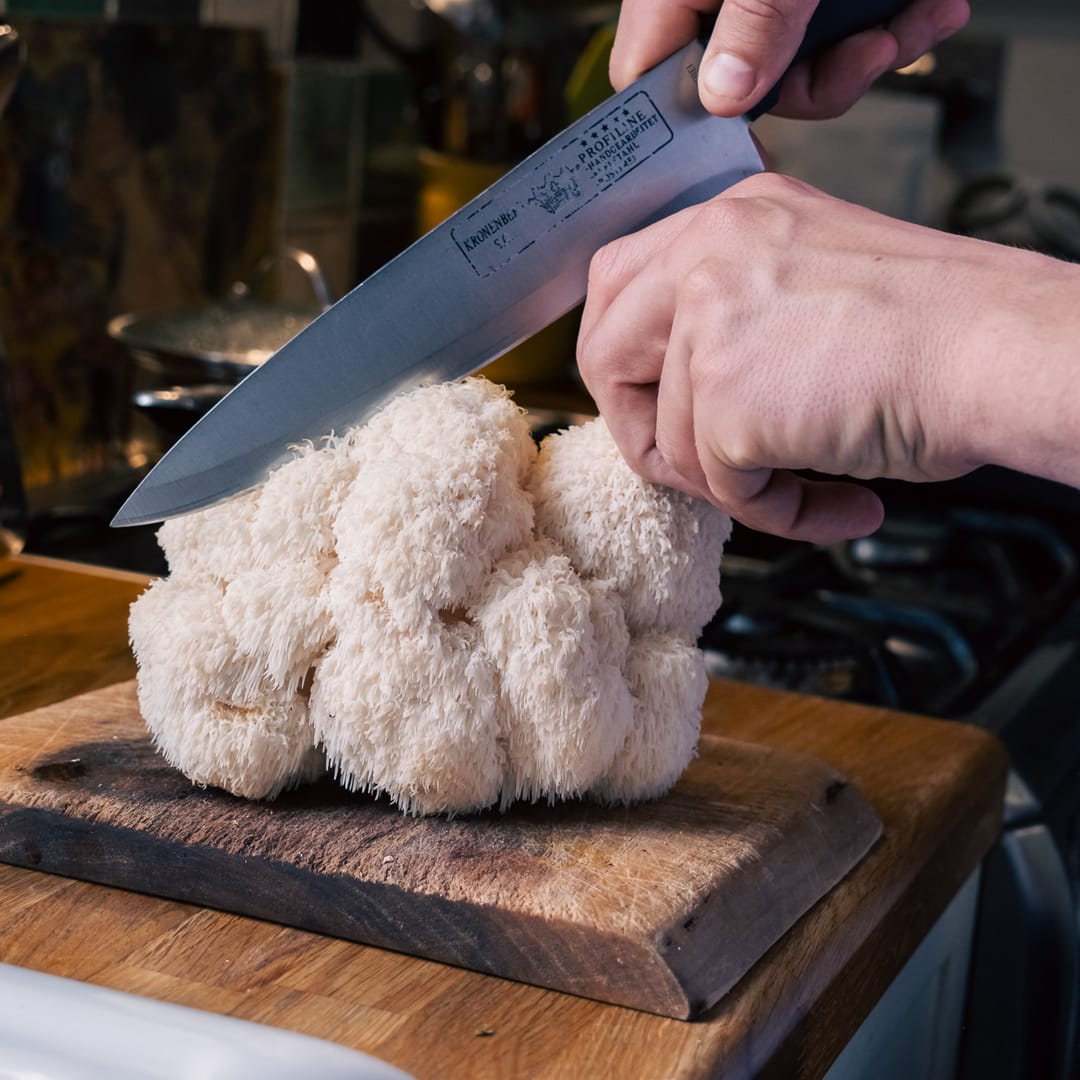

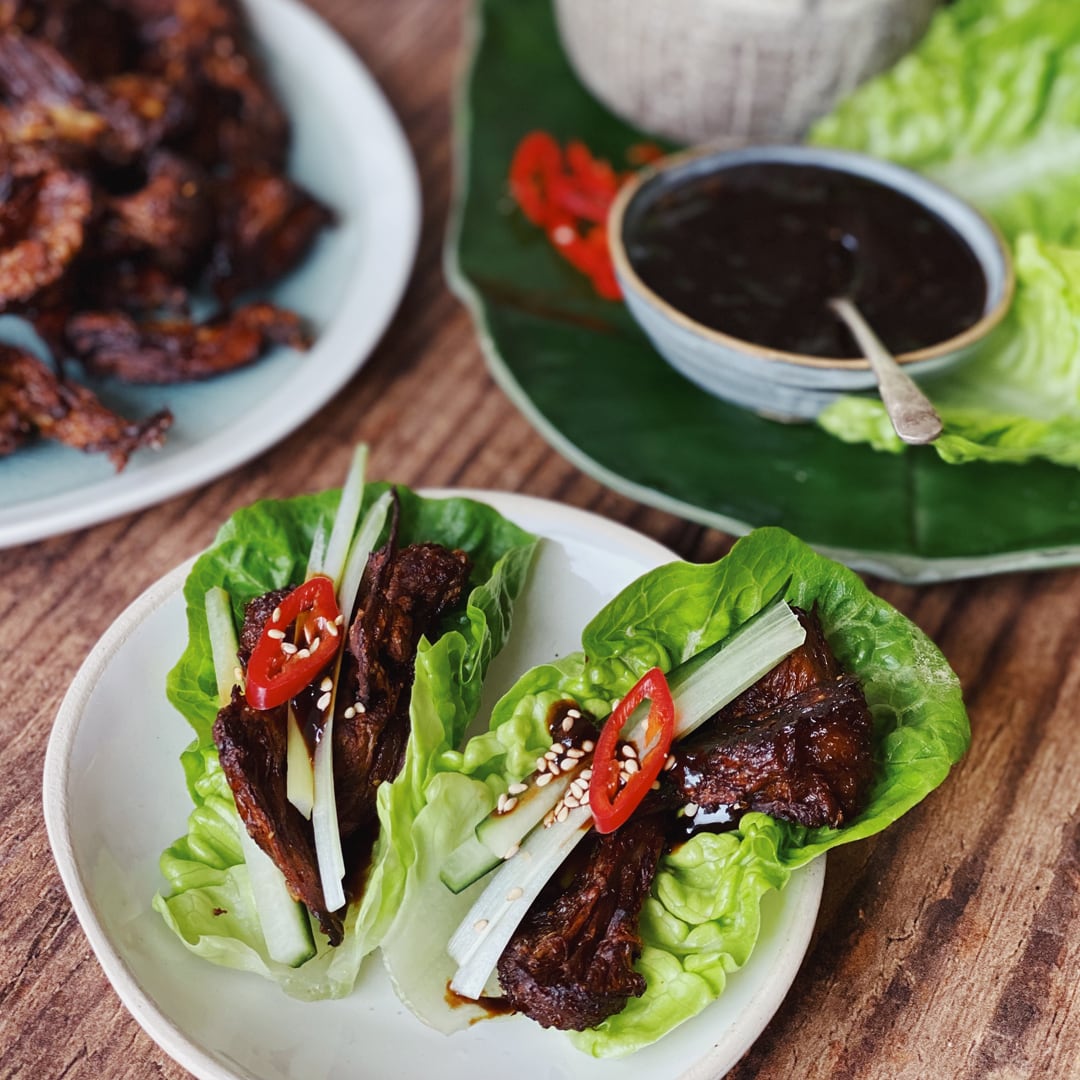
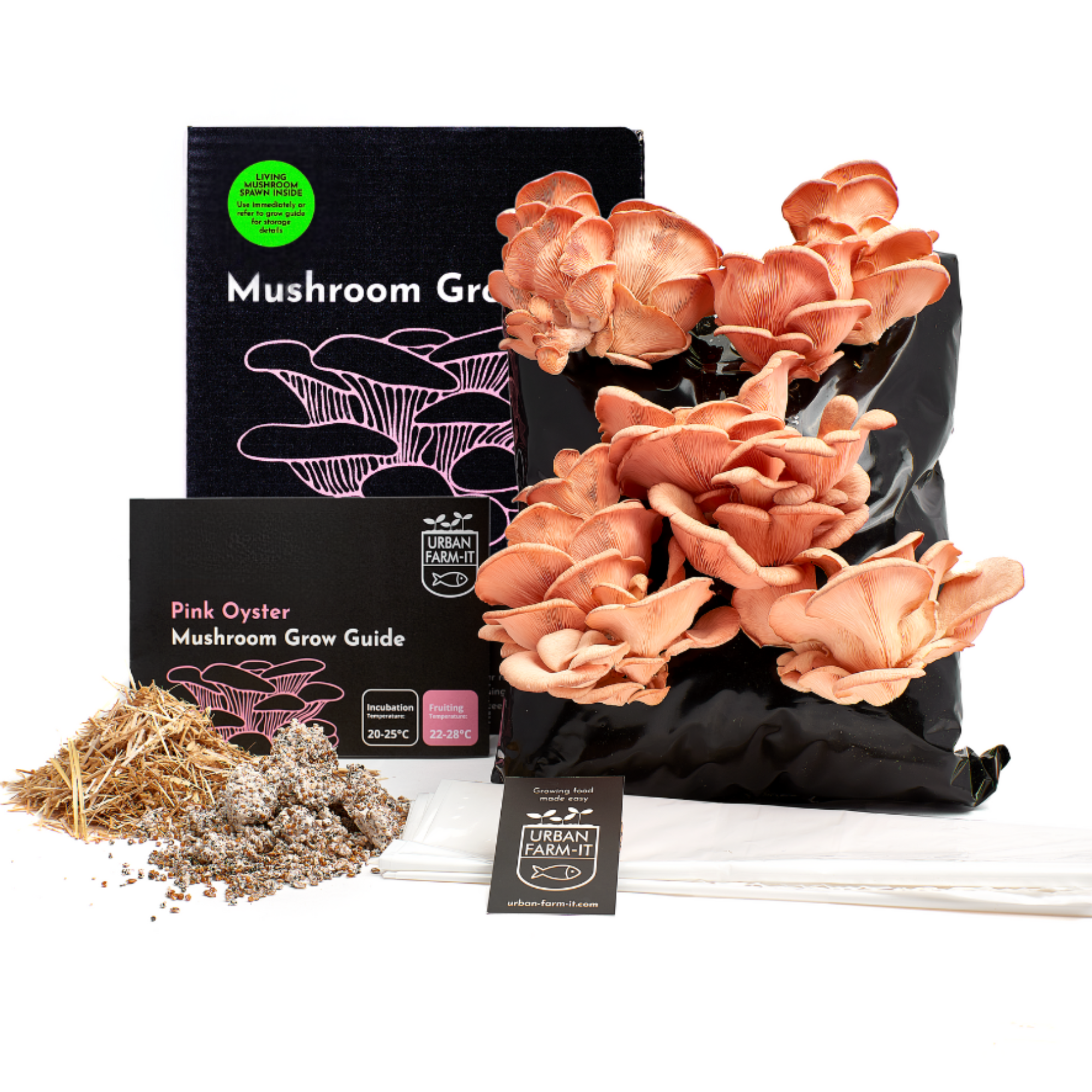
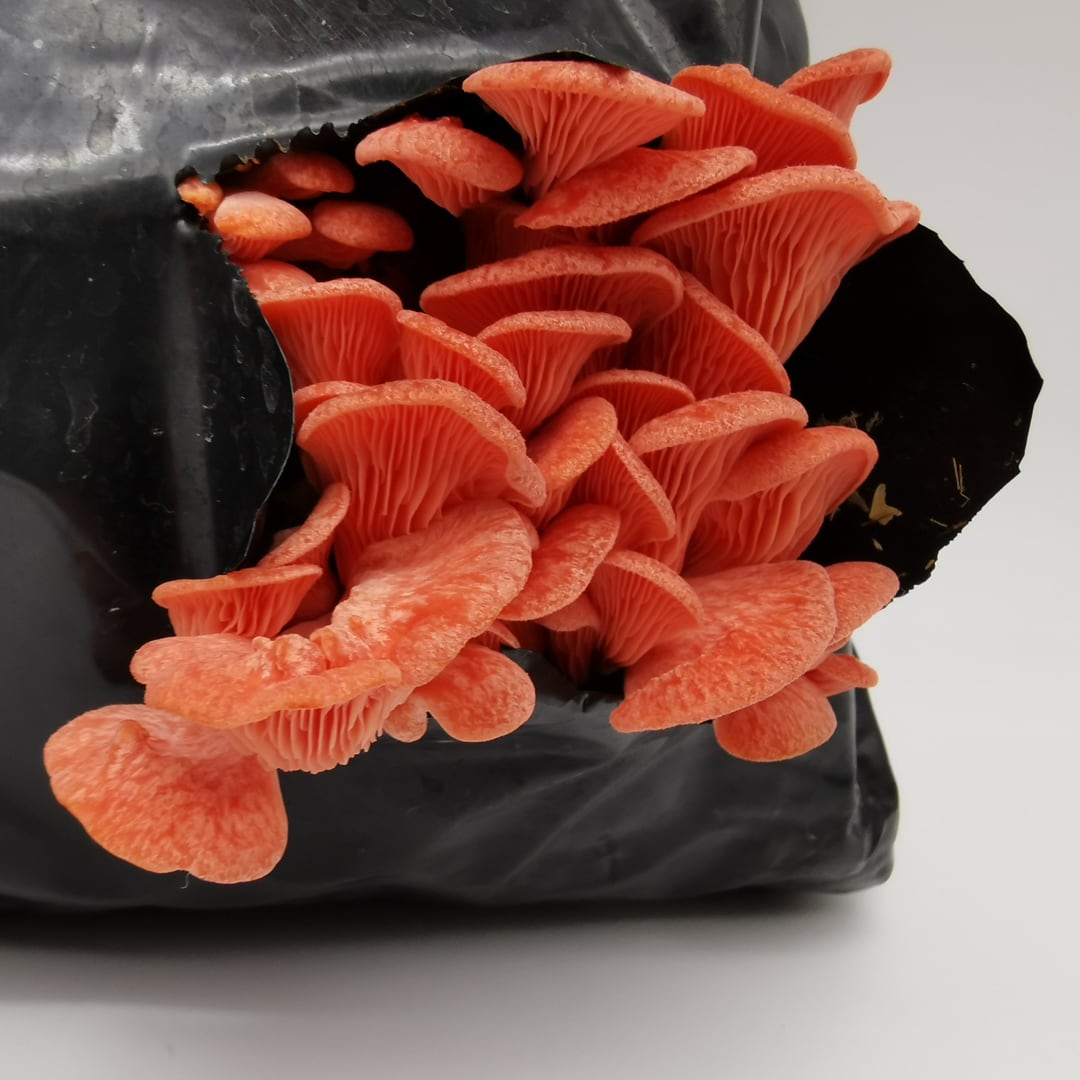
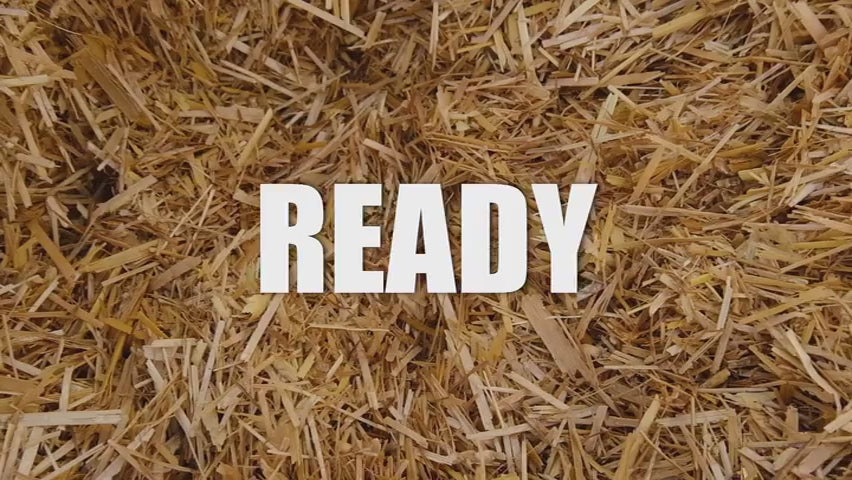
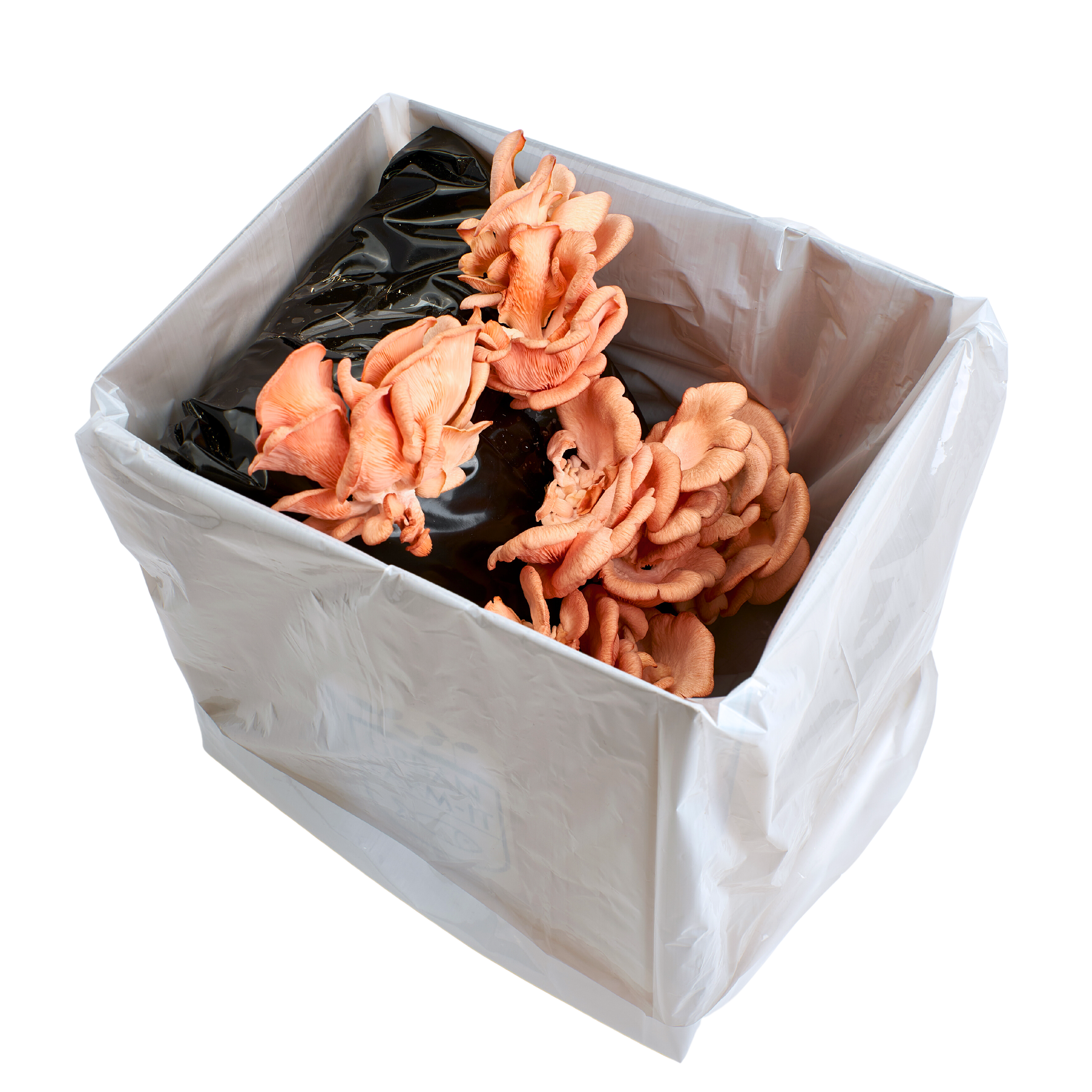
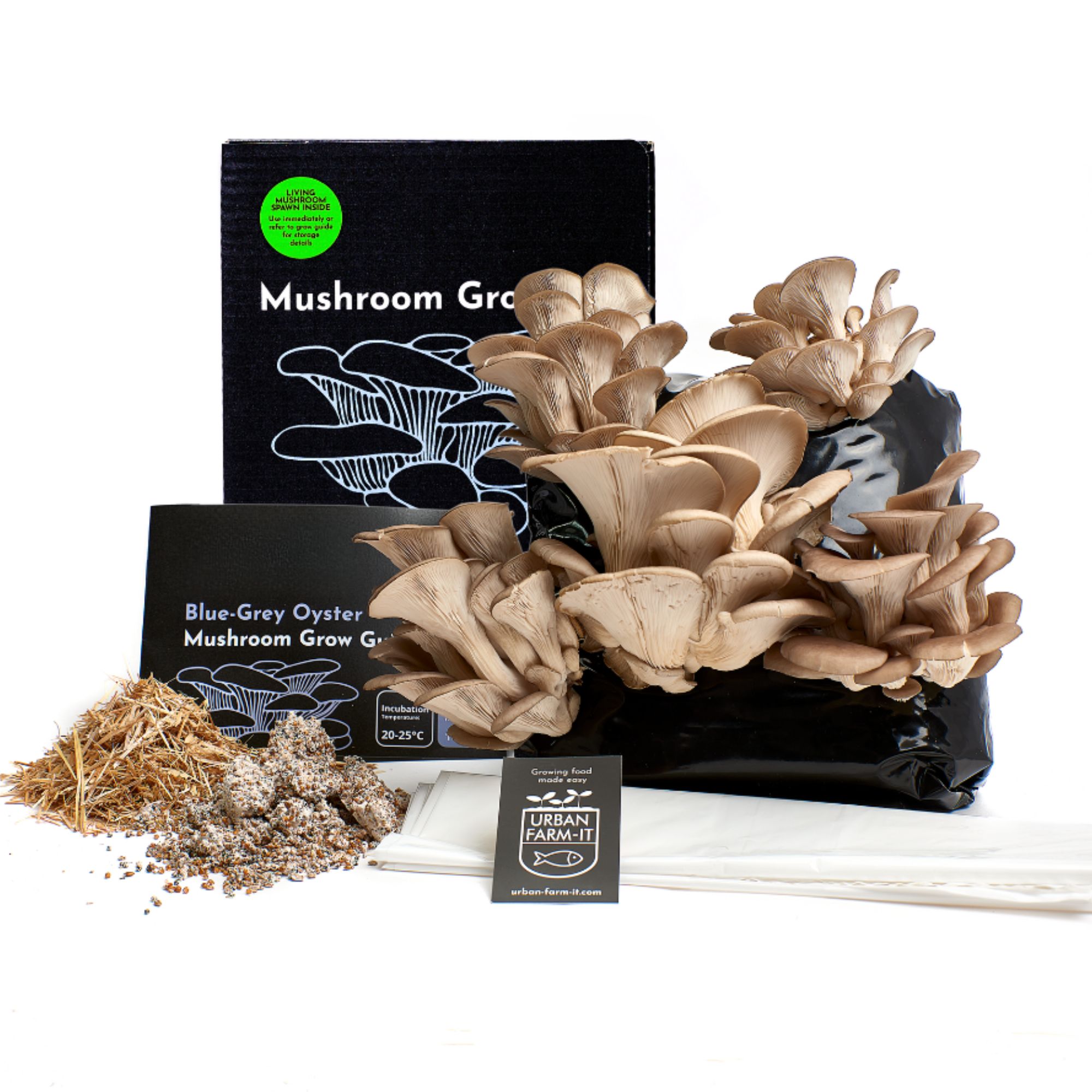
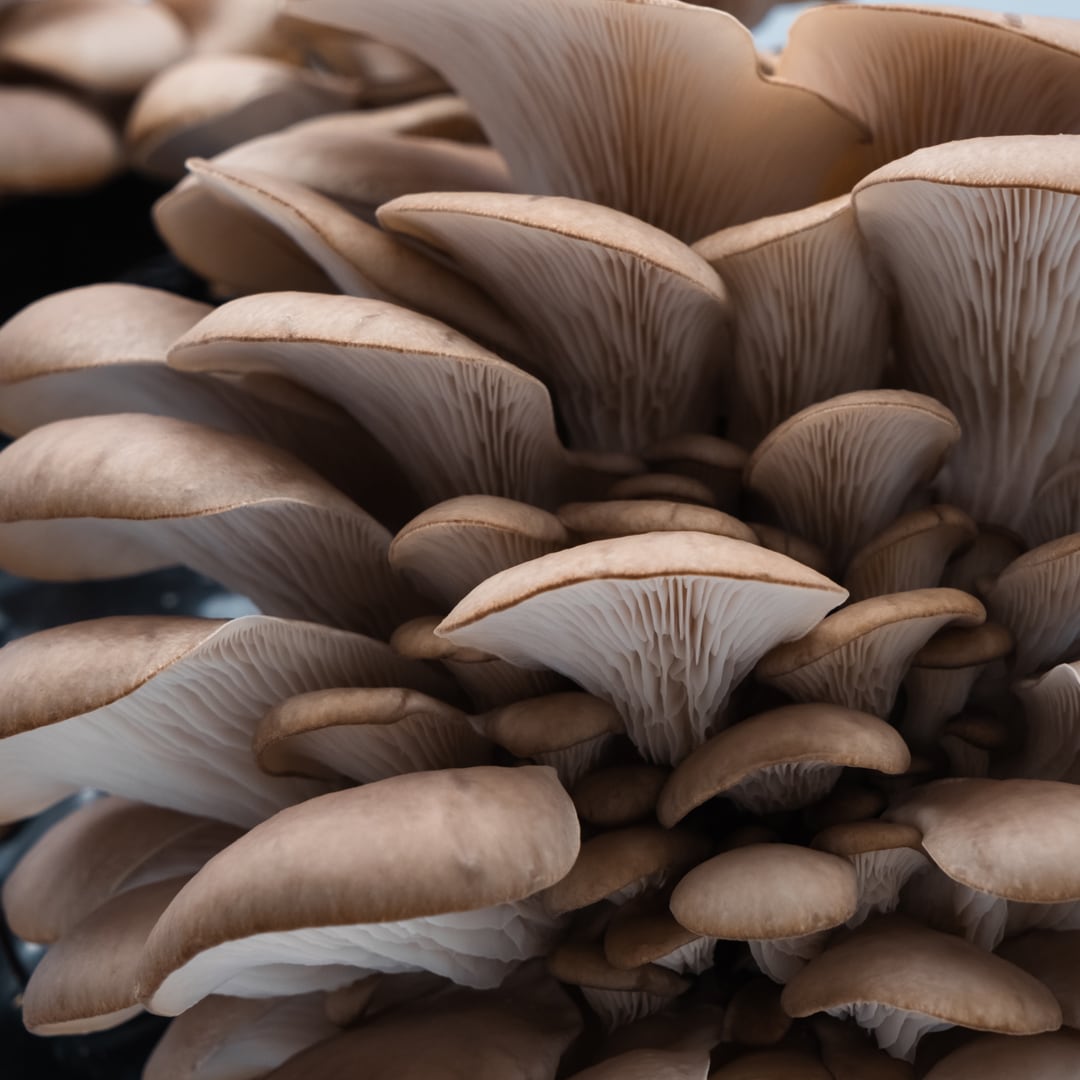
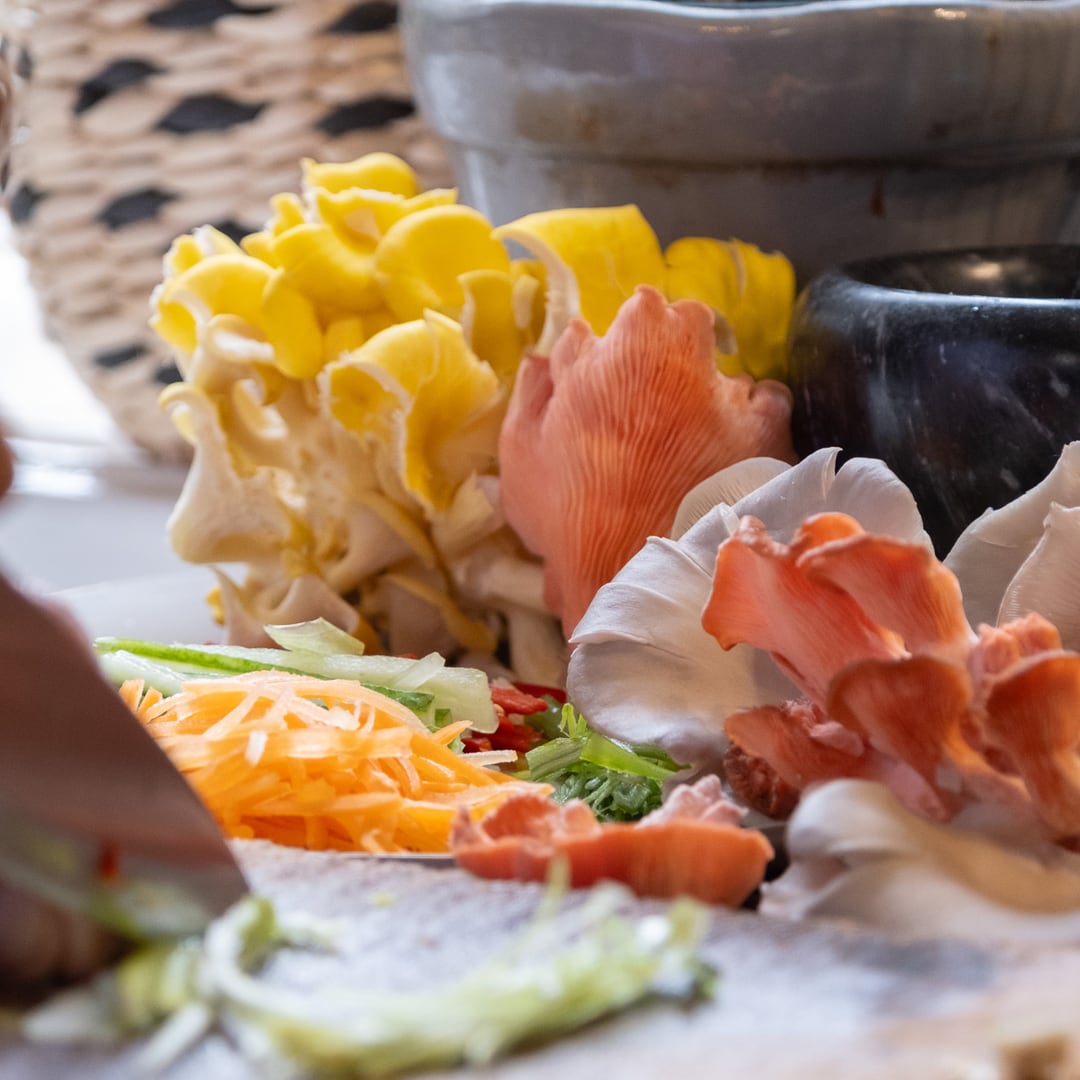
Share:
How to Grow Mushrooms in Buckets
How to Grow Mushrooms on Logs